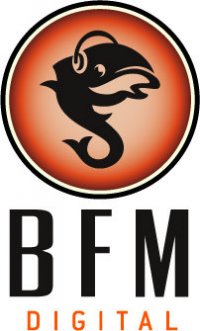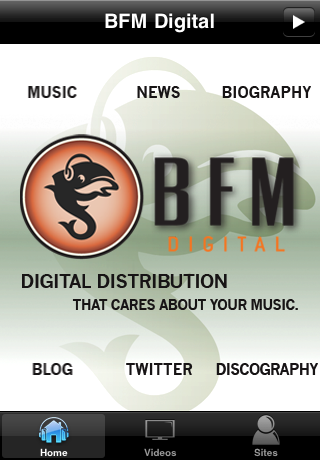Have you heard the news? Apparently the long tail is flat. For those of you unfamiliar with the long tail, it’s a theory coined by Chris Anderson (The Long Tail: Why the Future of Business is Selling Less of More) that describes the niche strategy of businesses that sell a large number of unique items in relatively small quantities. Because of the low overhead incurred through the selling of digital products, the long tail was supposed to help retailers of less popular items earn significant profit by selling small volumes of hard-to-find items to many customers (instead of only selling large volumes of a reduced number of popular items).
For musicians, the long tail of music was supposed to help redistribute the wealth a bit in the music industry. It was supposed to shift the industry away from having a few big artists that earn large profits to having many smaller indie/niche artists that earn moderate profits. The notion behind this was that through digitization, niche releases are more accessible to fans and thus easier to discover, purchase, and consume. Through this long tail of music, a musician’s middle class was supposed to have been formed. Well, where is this musician’s middle class that Gerd Leonhard and Dave Kusek wrote about a few years ago? Why has the long tail not proved to be commercially viable? Why aren’t niche artists profiting from their art online?
I suspect that the long tail theory is still viable for indie and unsigned artists to make money from their works. It’s undeniable that given the low overhead of making and distributing digital music, an artist could sell less and make more. Plus, there are more licensing/placement opportunities today than ever before and there are plenty of sites that help musicians leverage this. But still, why then is the long tail flat?
In my mind, there are three main reasons:
First, Creative Commons licensing has failed to help musicians monetize their works. Any notion of CC providing a viable profit mechanism for musicians is a pipe dream. The purpose of CC licensing is to expand the range of works available for others to legally share and collaborate on. It’s clear that this is the direction that Copyright Law should go in. It’s also undeniable that CC has a noble purpose that contributes to more creative works for the general public to enjoy. But, CC hasn’t actually been leveraged to make artists licensing works under it any money.
While the reason I make music is not to make money, I certainly wouldn’t mind seeing a little profit from my works. Perhaps, CC has overlooked this. With the vast number of works distributed under CC, how can their collective power be leveraged to compete against the market power of bigger acts. Isn’t this what the long tail is all about? If CC doesn’t figure this out, how can it reasonably expect to be an appropriate solution for distributing creative works? Right now, CC licenses seem like a better fit for reference works that people can use to share knowledge. But for unique works of art, the notions of sharing and monetization must be intertwined. Wouldn’t you rather your favorite artists not get a day job so that they can always be making new music for you?
Second, long tail artists haven’t been working collectively to distribute their music. It’s hard to argue against the power in numbers; simply put, the more people that work together on a common purpose, the higher the chance that purpose is achieved. This is the underlying theory that the American Revolution was built on (“Join or Die” anyone?), that collective bargaining is based on, and that a shit ton of sites on the web base their successful business models on (Craigslist is a classifieds aggregator; eBay is an auction aggregator). So, why aren’t long tail musicians taking advantage of this?
There have been some attempts to do this, and some are even successful. Magnatune, for example, aggregates CC works and sells them in an Itunes style store. But the biggest vault of CC works, ccMixter (CC’s own music sharing/collaboration community), has no monetization whatsoever, not even ads (which its artists could perhaps see a rev share on). Why hasn’t ccMixter leveraged the collective power of its community to make its members some money? Because of this, CC licensing seems to be more effective as a marketing tactic than a new rights management system — license one song under CC, have fans share and remix it, and have this exposure trickle over to other songs which are sold.
Merlin is a good example of an organization that is thinking about the collective power of long tail musicians. Merlin is the world’s first global new-media rights licensing agency that manages new-media rights for indie artists. The collective market share of Merlin artists is larger than EMI’s market share. That’s right, its market share is on par with the majors. Through this mechanism, indie acts can punch above their weight to eat like a bird and shit like an elephant. And while Merlin dropped the ball a bit on the Last.fm negotiations, it wil be successful if it can find novel ways to leverage the power of its artists.
Third, long tail musicians haven’t been presented with the right ways of creatively distributing their music so that they can actually make a profit. Despite the digital boom, it’s still hard for unsigned and indie musicians to make much money form selling finished songs. While it’s easy to give fans the option of buying a song, the reality is that more music is now being distributed than ever before and musicians have to compete against other long tail musicians and the many options consumers have to get the music for free.
What seems to be happening is that long tail artists are stuck on the notion of just selling finished works. If Merlin fails, it will certainly be because of this. Instead, long tail artists need to look to aggregating as many sources of revenue as possible, and to create as many value adds for their music as they can. A finished song should only be a part of the value proposition an artist gives a fan. If these value adds are engaging and give fans a new experience, they will convert casual fans into loyal fans and will give them a reason to financially support artists. While there are tools on the web such as Topspin, ReverbNation, and AWAL that currently target indie and unsigned artists, these services need to recognize that focusing on selling finished works may not be entire answer.
So how are we to aggregate and distribute the long tail of music so that its collective power starts making an economic fuss? How do we improve music discovery so more of these artists get discovered? And if we’re not able to sell songs, what other kinds of value adds can we give fans to boost our brands and how do we monetize those value adds? The answers to these questions are at the heart of a the type of service that unsigned/indie musicians need to profit from their works in this new era of music. Soon, we will all find out.





